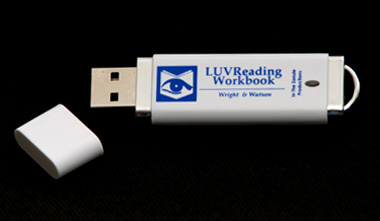
Learn to Use Your Vision for Reading
This workbook is designed to help adult readers with macular degeneration or other types of low vision to continue to read for utility and pleasure.
Learn to Use Your Vision for Reading (LUVReading)™ is a workbook designed to help adult, developed readers with recent or long-term macular loss to acquire skills that will help them to continue to read for utility and pleasure. It is not designed to teach basic literacy skills to undeveloped readers. The activities in this workbook are intended for independent, at-home use. The exercises are designed to allow readers to monitor their own success. No writing is required to complete them.
LUVReading™ can serve as a resource for the low vision instructor, providing at-home practice readings to supplement and reinforce clinical instruction. This introduction provides information about the purpose and structure of the workbook as well as guidelines for assessing skills, placing individuals in the appropriate level of materials, and developing training sequences.
In the 15 years since its original publication, LUVReading™ has been effective for a wide variety of applications in addition to its original intended use. For example, it has been used to help readers with constricted fields from glaucoma or optic atrophy as well as hemianopic visual field defects from cerebral vascular accidents or traumatic brain injuries to regain visual skills for effective reading. Furthermore, exercises in the second and third sections have been used to remediate writing difficulties stemming from vision loss.
This innovative digital version of the workbook contains within it multiple navigation features. Section titles and names of exercises are linked within the document to enable the user to navigate straight to the location of the desired section or exercise. Words that are linked are bold-faced, underlined or have a pale blue background.
Low Vision Workbook
The workbook is divided into 4 sections that represent the four major components of the reading rehabilitation process:
- Developing Your Best Vision
Explains low vision services, provides a training program in eccentric viewing, and offers tips for reading with macular loss.The next three sections of the workbook contain reading activities and begins with a briefly explanation on how to use that part of the workbook. Exercises are in order of increasing difficulty ( print size, word length, line-spacing, reading level, or task difficulty)
- Visual Training Exercises
Use to encourage precision and speed in word recognition
- Comprehension Exercises
Use to improve the understanding of continuous text print materials;This section also offers suggestions for reading rehabilitation instruction.
- Practice Readings
Stories and articles for further practice.
